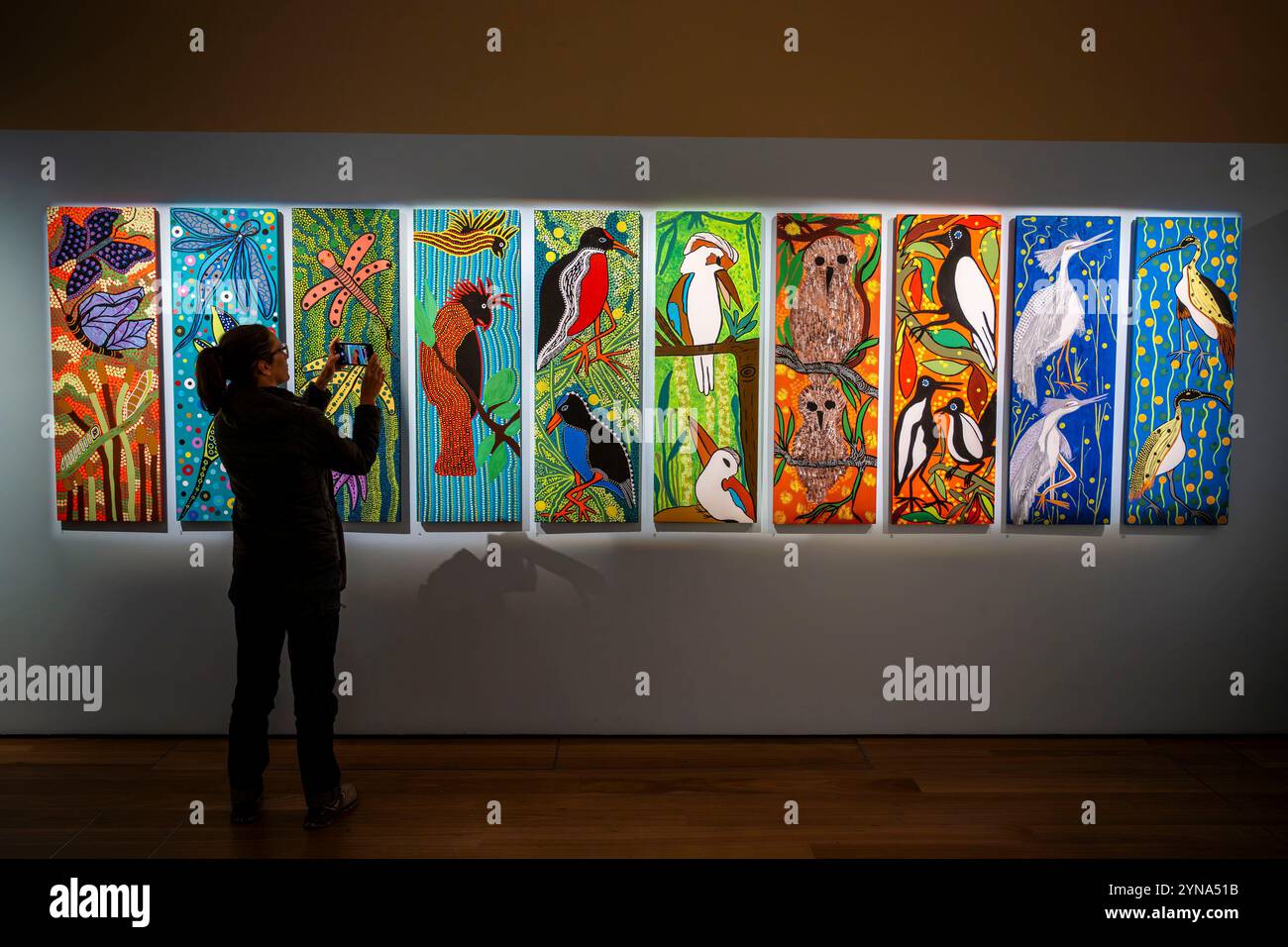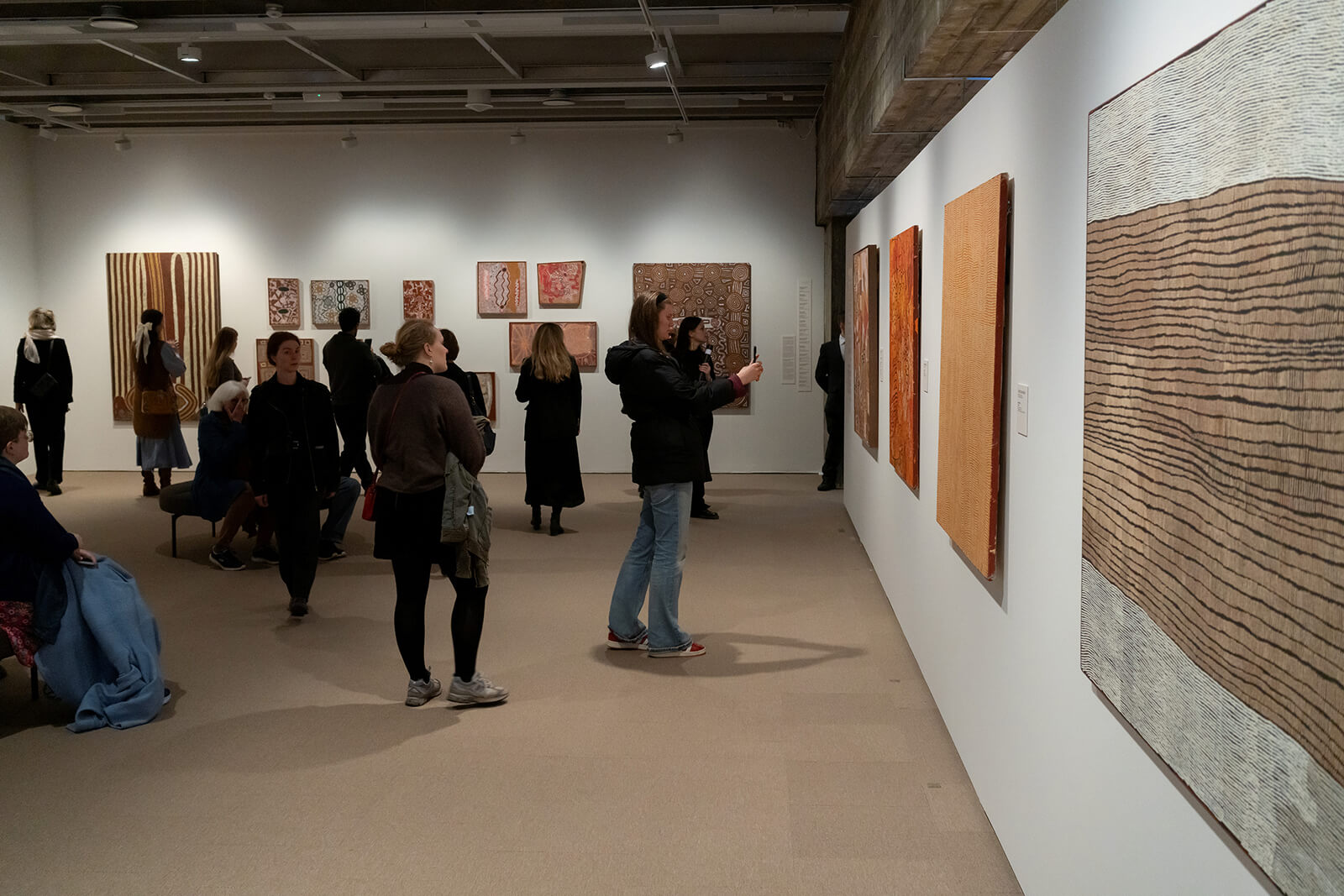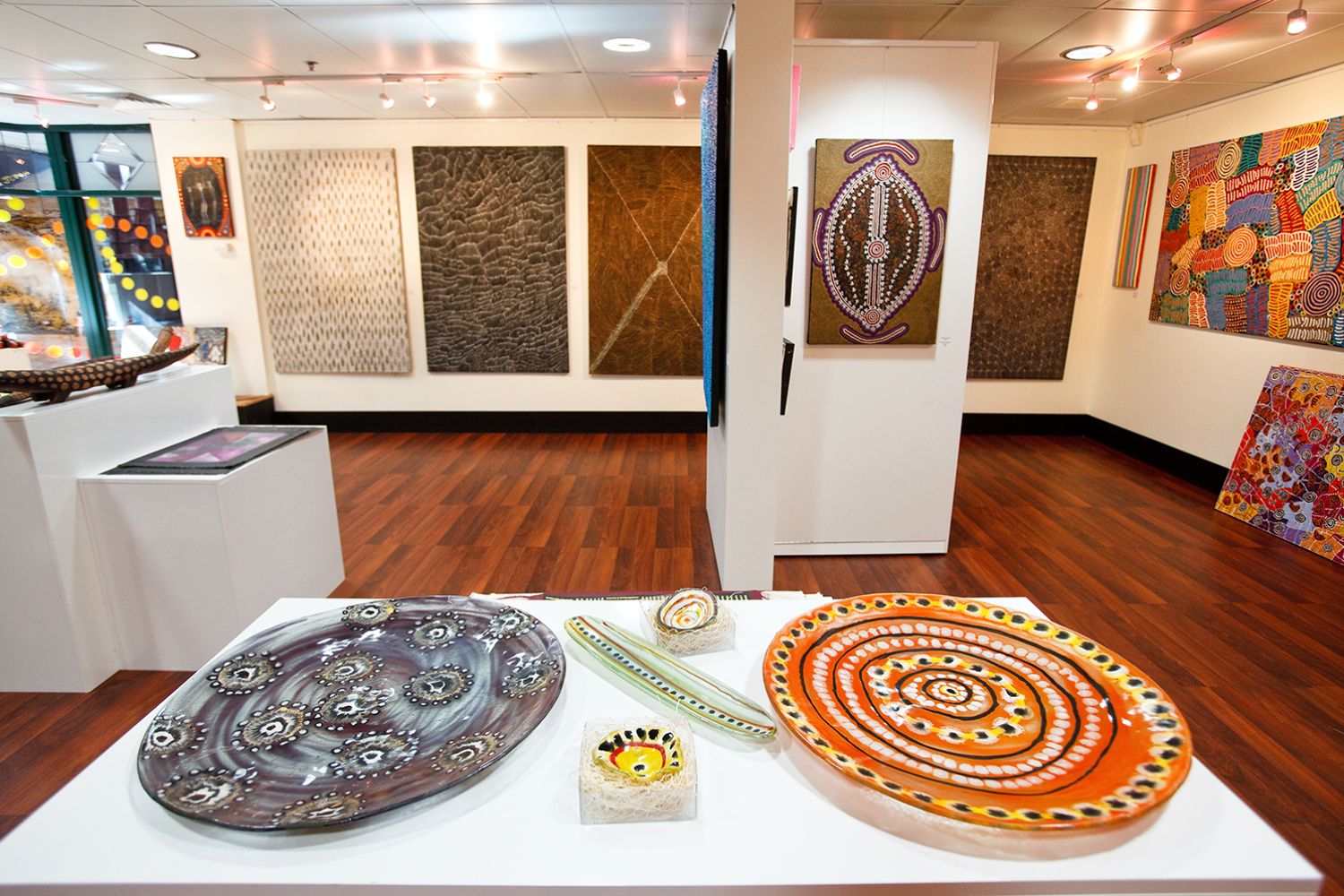
Current Curatorial Approaches and Thematic Engagements in Indigenous Art Museum Exhibitions
Indigenous art museums and institutions with significant Indigenous collections are undergoing a profound transformation, shifting from colonial-era paradigms of anthropological display to dynamic, Indigenous-led spaces of cultural affirmation, education, and critical discourse. Contemporary exhibitions in these venues reflect a multifaceted engagement with decolonization, self-determination, cultural revitalization, and global issues, offering nuanced perspectives on Indigenous histories, present realities, and future aspirations. This article delves into the prevalent themes, curatorial methodologies, and conceptual frameworks characterizing current exhibitions, presenting an encyclopedic overview of their evolving role and significance.
I. Decolonizing the Gaze and Institutional Practice
A cornerstone of contemporary Indigenous art exhibitions is the explicit commitment to decolonization, challenging the historical power imbalances embedded within museological practices. This manifests in several critical ways:
-
Curatorial Sovereignty and Indigenous Leadership: Increasingly, exhibitions are conceived, curated, and interpreted by Indigenous scholars, artists, and community members. This shift from external, often ethnocentric, perspectives to internal, culturally grounded voices ensures that narratives are authentic, respectful, and reflective of Indigenous knowledge systems and worldviews. Curatorial sovereignty empowers Indigenous communities to define what is displayed, how it is interpreted, and for what purpose, moving beyond the objectification of Indigenous cultures to the celebration of Indigenous agency and intellectual property. This often involves collaborating with Elders and knowledge holders, embedding oral histories and traditional protocols directly into the exhibition design.
-
Repatriation and Recontextualization: While physical repatriation of ancestral remains and sacred objects remains an ongoing struggle, exhibitions are actively engaging with the idea of repatriation and recontextualization. This includes showcasing previously unexhibited items from museum collections, reinterpreting them through Indigenous lenses, and acknowledging their provenance and often violent acquisition histories. Exhibitions might feature objects that have returned to their communities, highlighting the process of healing and cultural resurgence that accompanies their return. Furthermore, the concept of "digital repatriation" through virtual exhibitions and online databases allows for wider Indigenous access to cultural heritage, irrespective of physical location.
-
Challenging Master Narratives and Colonial Histories: Many current exhibitions directly confront the colonial past, critiquing its lasting impacts and foregrounding Indigenous resistance and resilience. They dismantle simplistic, often romanticized or tragic, portrayals of Indigenous peoples, replacing them with complex, multi-layered histories of survival, adaptation, and political assertion. This can involve juxtaposing historical artifacts with contemporary artworks that comment on historical injustices, land dispossession, and cultural suppression, thereby creating a dialogue between past and present.


II. Celebrating Diversity, Self-Representation, and Intersectionality
Contemporary exhibitions move beyond monolithic representations of "Indigenous art," embracing the immense diversity of Indigenous cultures, artistic practices, and individual identities.
-
Bridging "Traditional" and "Contemporary": A key trend is the dismantling of the artificial binary between "traditional" and "contemporary" Indigenous art. Exhibitions frequently demonstrate the continuum of Indigenous artistic practice, showing how ancient techniques, motifs, and philosophical underpinnings inform and evolve within modern and postmodern expressions. This approach highlights the dynamism and adaptability of Indigenous cultures, showcasing artists who seamlessly integrate ancestral knowledge with new media, materials, and global art movements. The focus is on the inherent contemporaneity of Indigenous cultures, which are living and ever-changing.
-
Regional, National, and International Specificity: Exhibitions increasingly emphasize the distinctiveness of specific Indigenous nations, language groups, and geographical regions. Rather than grouping diverse cultures under broad, often generic, labels, curators delve into the unique aesthetic traditions, storytelling practices, and cultural protocols of particular communities. This specificity extends to showcasing the work of individual artists or artist collectives, allowing for deeper engagement with their personal narratives and artistic journeys. Concurrently, there’s a growing interest in exhibitions that explore "global Indigeneity," drawing connections and fostering dialogues among Indigenous artists and communities across continents, recognizing shared experiences of colonialism, environmental stewardship, and cultural resurgence.
-
Intersectionality and Identity Exploration: Reflecting broader societal dialogues, current exhibitions explore the intersectional identities within Indigenous communities. Themes of gender, sexuality (Two-Spirit identities), urban Indigenous experiences, disability, and diaspora are increasingly prominent. These exhibitions provide platforms for artists to articulate their complex lived realities, challenging stereotypes and fostering a more inclusive understanding of Indigenous personhood. They often delve into personal narratives, family histories, and community-specific issues, offering intimate yet universally resonant perspectives.
III. Revitalization, Language, and Knowledge Transmission
Indigenous art museums are vital sites for cultural revitalization, acting as active participants in the preservation and transmission of Indigenous languages, knowledge systems, and living traditions.
-
Art as Language and Pedagogy: Exhibitions frequently incorporate Indigenous languages, not merely as translations, but as integral components of the artistic and interpretive experience. Artworks might feature text in Indigenous languages, or exhibition texts might be presented bilingually or multilingually, affirming the vitality of these languages. Furthermore, art is presented as a powerful pedagogical tool for intergenerational knowledge transfer, teaching viewers about cosmologies, histories, land-based knowledge, and social protocols. Interactive elements, workshops, and artist talks are often integrated to facilitate this learning process.
-
Living Traditions and Cultural Practices: Moving beyond static displays of artifacts, many exhibitions emphasize the performative and living aspects of Indigenous cultures. This can involve showcasing contemporary practitioners of traditional arts (e.g., weaving, carving, beadwork, regalia making), live demonstrations, or incorporating performance art, dance, and music directly into the exhibition space or as accompanying public programs. The aim is to present Indigenous cultures not as relics of the past but as vibrant, evolving, and deeply embedded in contemporary life. These exhibitions often highlight the sustainability practices, material knowledge, and spiritual connections inherent in traditional art forms.
IV. Engaging with Global and Contemporary Issues
Indigenous art, as presented in current exhibitions, is far from insular; it actively engages with pressing global and contemporary issues, offering unique Indigenous perspectives and solutions.
-
Environmental Stewardship and Land Rights: Climate change, environmental degradation, and land dispossession are recurring themes. Indigenous artists often use their work to advocate for environmental justice, highlight the profound spiritual and cultural connections to land and water, and critique the destructive impacts of resource extraction and settler colonialism. Exhibitions might feature artworks that map traditional territories, narrate stories of land defense, or envision sustainable futures rooted in Indigenous ecological knowledge. This emphasis underscores the role of Indigenous peoples as crucial protectors of biodiversity and proponents of alternative models of human-environment relations.
-
Social Justice and Human Rights: Exhibitions frequently address critical social justice issues affecting Indigenous communities globally, such as the Missing and Murdered Indigenous Women and Girls (MMIWG) crisis, systemic racism, police brutality, incarceration rates, and the ongoing impacts of residential schools or assimilation policies. Art becomes a powerful medium for advocacy, memorialization, and healing, giving voice to marginalized experiences and challenging audiences to confront uncomfortable truths. These exhibitions foster empathy and encourage critical reflection on societal structures and historical injustices.
-
Global Indigeneity and Cross-Cultural Dialogues: A growing number of exhibitions foster dialogues between Indigenous artists and communities from different parts of the world. By exploring shared experiences of colonialism, resistance, cultural resurgence, and connections to land, these exhibitions build solidarity and highlight the universal aspects of Indigenous struggles and triumphs. They demonstrate how Indigenous art contributes to a broader global conversation about human rights, cultural diversity, and sustainable futures.
V. Technological Integration and Digital Futures
Embracing innovation, Indigenous art museums are increasingly leveraging technology to enhance exhibitions, broaden accessibility, and explore new forms of artistic expression.
-
Digital Storytelling and New Media: Artists and curators are incorporating virtual reality (VR), augmented reality (AR), interactive installations, video art, and digital animation to create immersive and engaging experiences. These technologies offer new avenues for storytelling, allowing for the reconstruction of historical environments, the visualization of oral traditions, or the creation of speculative futures. They also provide innovative ways to engage younger generations and bridge geographical distances.
-
Online Accessibility and Virtual Exhibitions: The COVID-19 pandemic accelerated the development of virtual exhibitions and online platforms, making Indigenous art and cultural knowledge accessible to a global audience. These digital initiatives not only expand reach but also serve as vital archives and educational resources, ensuring that Indigenous voices and artworks are present in the digital sphere, transcending the physical limitations of museum walls.
Conclusion
Current exhibitions at Indigenous art museums are dynamic, politically engaged, and culturally rich, reflecting a paradigm shift in museological practice. They are characterized by a profound commitment to decolonization, curatorial sovereignty, and the celebration of Indigenous self-determination. By foregrounding Indigenous voices, challenging colonial narratives, and embracing the continuum of artistic practice, these institutions serve as vital spaces for cultural revitalization, knowledge transmission, and critical dialogue. Through their engagement with global issues, exploration of intersectional identities, and adoption of innovative technologies, Indigenous art museums are not merely repositories of the past but vibrant, forward-looking institutions that shape contemporary understandings of art, culture, and humanity, offering invaluable insights into Indigenous resilience, creativity, and profound contributions to the global cultural landscape.


